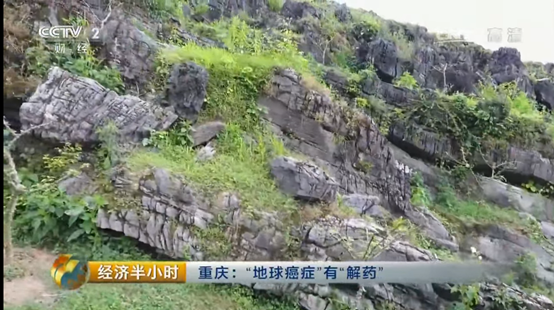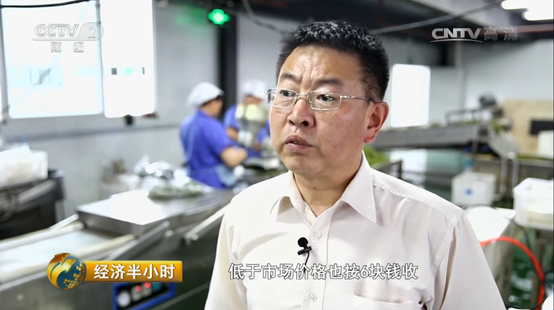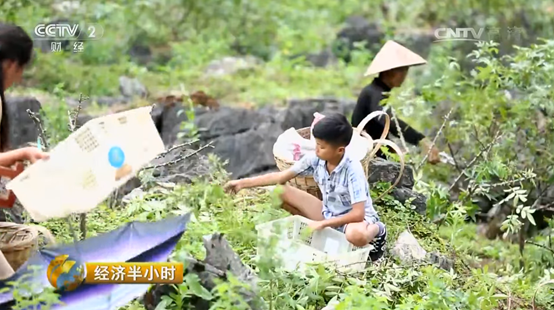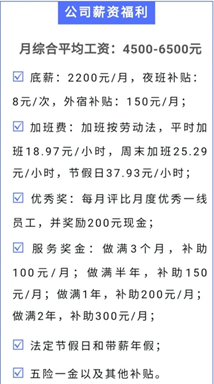This is a point of thought that diverged from a program.
I watched a previous episode of CCTV that discussed the poverty alleviation in Youyang County, a national-level poverty-stricken county in Chongqing, 2017 was the year.
This county faces a serious stony desertification problem, 45.27% of its land area is affected by stony desertification, which means that the mountainous land has turned into a rocky desert, resulting in very thin soil suitable for farming.
Due to the thin soil, farmers have extremely low yields when growing sweet potatoes, potatoes, corn, etc., often resulting in no harvest, and the income from farming is already low, exacerbating local poverty.
Moreover, cultivating these crops requires tilling the soil, which further leads to soil erosion, and soil erosion can lead to decreased yields and geological disaster issues. Addressing soil erosion requires financial investment from the county government, which adds a heavier burden to the impoverished county.

How can we alleviate poverty, prevent soil erosion, and manage stony desertification?
To manage stony desertification, farmers cannot continue to grow corn, potatoes, and sweet potatoes. This would completely deprive farmers of their economic source.
At the same time, this county is still a national-level poverty-stricken county, and there is a task to help farmers escape poverty.
So what would you do? Forcibly prevent farmers from planting crops, then apply for poverty alleviation funds and funds for stony desertification management?
The problem is that farmers have no income every year; should they continue to receive money from the government every year? Young people can go out to work,
but those at home are mostly older farmers, who find it difficult to go out to work. Should they rely entirely on government handouts to live?
The county government did this: they found an agricultural technology company whose green Sichuan pepper can be planted in rocky mountainous areas, producing higher economic value than growing corn and sweet potatoes, while also protecting against soil erosion.
As long as they can guide farmers to plant this crop, it will have a good effect, but this economic crop requires upfront investment, and the price of Sichuan pepper is subject to market fluctuations, which could lead to losses.
How can we attract farmers to plant it?
The county government used the national special funds for managing stony desertification to purchase seeds and technical services for planting green Sichuan pepper from the company, effectively making the government the upfront investor. After one or two years, once the green Sichuan pepper survives, the government will transfer it to the farmers without charging a transfer fee.
After the transfer, the agricultural company continues to provide technical guidance to farmers, charging only 15% of the final Sichuan pepper sales revenue as a guidance fee.
Moreover, the county government and the agricultural technology company signed a price risk-sharing agreement,
ensuring that regardless of market conditions, the agricultural company guarantees a minimum purchase price of 6 yuan per pound. This means that even if the market price is below 6 yuan, they will still purchase at 6 yuan, and if the market price exceeds 6 yuan, the excess will be shared equally between the agricultural company and the farmers. For example, if the market price is 8 yuan, the agricultural technology company can purchase green Sichuan pepper from farmers at 7 yuan.

Furthermore, considering that the cultivation of economic crops requires careful management, to encourage farmers to diligently cultivate and increase their income, the county government allocated some funds from agricultural financing to increase the purchase price for the additional yield of green Sichuan pepper by 0.5 yuan per pound.
With the technical and purchasing issues resolved, many local growers applied to contract the mountainous land for green Sichuan pepper cultivation.
In the video, a grower sold 40,000 pounds during the first purchase, and they expect the next harvest to increase to 100,000 pounds, with a net income estimated to be between one to two hundred thousand. Growers will also hire local villagers during the Sichuan pepper harvest; the daily wage for villagers pruning is 70 yuan, while the labor fee for picking Sichuan pepper is 1.2 yuan per pound, with a daily picking capacity of around eighty to ninety pounds.
Most local young adults work outside, and those hired to pick Sichuan pepper are mainly older villagers and children left behind, especially the left-behind children who also participate in labor. The Sichuan pepper plants are not tall, so children can also participate in picking. Many children find picking Sichuan pepper fun and experience the feeling of earning money, rather than just watching their grandparents work in the fields while they do nothing at home during holidays.
This project not only addresses the stony desertification issue but also increases farmers’ income.

This little girl also came to help pick Sichuan pepper; she picked 16 pounds and said she enjoyed picking Sichuan pepper and found it fun.

Additionally, the county government found a successful businessman from the county who had worked outside for many years and was familiar with the construction and decoration market. He introduced a species of cedar from Fujian to plant in the stony desertification wasteland of the county, planning to invest 2 million yuan annually for ten consecutive years, totaling 1.47 million seedlings.
Cedar is an important material for construction and can also protect against soil erosion. But who will take care of these millions of seedlings?
Local villagers will take care of them. As long as the farmers can keep these cedars alive, they can share the profits from timber sales with the businessman in an 80-20 split. Before taking care of the cedars, farmers could only grow corn (maize). CCTV interviewed a farmer, Tan Xuefang, who mentioned that due to the potential stony desertification of the land, his three acres yielded only about a thousand pounds, selling for just a few cents per pound, making it hardly profitable. However, by planting cedars, Tan Xuefang can earn five to six thousand yuan a year.
Moreover, taking care of cedars requires much less labor intensity than growing economic crops. Farmers no longer need to grow corn, improving both labor intensity and income.
The businessman calculated the profits; after ten years, when the first cedar trees are harvested, he will have planted over 1 million seedlings. After harvesting, each tree can bring in 50-80 yuan in net income. When the time comes to harvest the first 300,000 trees, he could earn tens of millions, recouping his investment and expecting good profits overall.
After watching, I feel that the local government is very thoughtful and has done well. From the video, it is evident that doing these things requires a lot of energy and involves a lot of work, especially at the grassroots level.
Firstly, technological advancement is fundamental.
If there were no agricultural company to successfully plant green Sichuan pepper on stony desertification land and guarantee yields,
and if there were no agricultural company cultivating cedars that can thrive on semi-stony desertification land with acceptable survival rates, these projects would be commercially difficult to succeed.
Understanding the significant changes brought about by technological advancement is crucial, which also explains why our officials say, “Science and technology are the primary productive forces.”
Secondly, after careful calculation, I feel that agriculture can only help alleviate poverty; achieving overall wealth is still somewhat difficult.
In this case, although large-scale growers can earn a net income of one to two hundred thousand yuan by selling 100,000 pounds of green Sichuan pepper,
this is still a minority. If a farmer sells 10,000 pounds of green Sichuan pepper, the net income would only be around one to two thousand yuan. The villagers hired to pick Sichuan pepper earn even less, making only a few dozen yuan a day during the harvest season, totaling just a few thousand yuan a year.
Including cedar planting, although the businessman investing in over 1 million cedar trees can earn a lot, each cedar only brings in 50-80 yuan in net income, while the farmers responsible for taking care of the cedars earn only a few thousand yuan a year, although the labor intensity is much lower than growing crops.
Overall, this income is clearly still less than what one could earn working in a factory, which explains why the video mainly features older individuals and children, as this income is not attractive to young people.
The United States, as the world’s largest agricultural country, has only a few million farmers nationwide,
which shows that the ability of the primary industry to generate wealth is indeed limited.
In the 2020 statistical bulletin, the primary industry accounted for only 7.7% of China’s GDP, indicating that the proportion of the population engaged in agriculture has decreased to this level to achieve an average GDP per capita at the national average.
With 1.4 billion people, 7.7% amounts to less than 110 million people.
Therefore, alleviating poverty does not necessarily equate to becoming wealthy. If we want all citizens to enjoy a living standard comparable to that of Europe, the United States, and Japan, we must transfer rural populations to cities and into employment in manufacturing and the tertiary industry.
To move the populace to urban areas for residence and work, infrastructure construction is essential.
Perhaps now everyone’s experience has gradually diminished,
but in the 1980s and 1990s in China, it was indeed very difficult to travel from villages to county towns, especially in mountainous areas.
A county may seem small, but that is because the county town is indeed small; in reality, a county in China has a large area, usually over a thousand square kilometers, so a distance of several dozen kilometers from a village to a county town is quite normal.
Especially in mountainous areas, many villages may only be twenty kilometers away from the county town on the map, but in reality, it requires crossing mountains, and the actual distance can exceed 50 kilometers, with some even reaching 100 kilometers.
If there are no roads, it is extremely difficult for villagers to reach the county town, requiring several days of walking. In the past, those who could reach the county town were considered well-traveled.
My grandmother used to live in the countryside, and the actual distance to the county town was over forty kilometers. I measured it with Baidu Maps. To get to my grandmother’s house from the county town, I first had to take a bus to the town, then drive to the village. Just taking the bus took several hours, and then there was no road, so I had to walk several kilometers into the mountains to reach my grandmother’s house.
Those living deeper in the mountains, further from the road, need to walk even longer.
I thought to myself, thank goodness the government built roads to the village level; otherwise, I would have to walk all day to reach my grandmother’s house.
Conversely, villagers living in the village also face the same difficulties. A villager wanting to go to the county town to buy something cannot return the same day; they must stay overnight, and the cost of accommodation is not negligible for farmers relying on farming for income, so they may only go to the county town a few times a year.
Especially in mountainous and hilly areas, this is even more pronounced. This is why poverty is generally more severe in mountainous areas, while plain areas are relatively wealthier; transportation is indeed crucial.
If roads are not well constructed, it becomes very difficult for children to attend school in the county town and for themselves to work outside.
“To get rich, first build roads” is truly a wise summary.
In the past, due to a lack of funds, China could not build many roads in a year.
I checked the 1990 statistical bulletin, and excluding double tracks, the newly built railway mileage that year was only 127 kilometers. Yes, not 1,270 kilometers, but 127 kilometers. The newly built roads were only 2,141 kilometers.
In one year, only a little over 2,100 kilometers of roads were newly built across the country, averaging only 1 kilometer per county among the two to three thousand counties.
By the year 2000, this infrastructure capacity had significantly improved. I also checked the statistical bulletin for that year,
the newly built railway mainline mileage was 153 kilometers, still not much progress,
but the newly built roads reached 32,115 kilometers, which was 15 times that of 1990.
By 2020, the newly built railway mileage reached 4,933 kilometers, which is more than 30 times that of 2000.
The statistical bulletin did not state how many roads were newly built in 2020, only the expressways, but the Ministry of Transport’s official website states that by the end of 2019, the total road mileage in the country was 5.0125 million kilometers, an increase of 166,000 kilometers from the previous year. This figure is 5 times that of 2000.
When a laborer leaves the village and enters the global industrial cycle,
what industry becomes important. From earning a few thousand yuan a year in rural agricultural production to earning tens of thousands in textile, garment, and electronics factories, it is clearly a leap, but it is still not enough to satisfy our ambition for wealth.
I will post a recruitment advertisement for general workers from an electronics factory in the Pearl River Delta that I saw on social media.
This is a recruitment advertisement for a general worker at a major electronics manufacturer in Shenzhen in 2021, which produces electronic components and is a supply chain partner for global giants like Apple and Huawei.

The advertisement states that the comprehensive salary for general workers is 4,500-6,500 yuan. However, the base salary is only 2,200 yuan, which is the current minimum wage standard in Shenzhen. After two years of service, there is a seniority wage of 300 yuan per month, bringing it to 2,500 yuan.
It’s strange that even after two years, the base salary is only 2,500 yuan. How can the comprehensive salary be 4,500-6,500 yuan?
Undoubtedly, the comprehensive salary includes overtime pay.
According to Article 41 of China’s Labor Law:
Employers may extend working hours due to production and operational needs after consultation with labor unions and workers, but the extension must not exceed three hours per day and thirty-six hours per month while ensuring the health of workers.
Let’s calculate how much overtime pay there is. According to labor law, the maximum overtime is 36 hours per month.
If all 36 hours are regular overtime, 1.5 times the wage is 18.97 yuan per hour,
the monthly overtime pay would be 682.92 yuan.
If all 36 hours are weekend overtime, 2 times the wage is 25.29 yuan per hour,
the monthly overtime pay would be 910.44 yuan.
Holiday pay is three times the wage, but there are very few holidays in a year.
Therefore, if strictly following labor law, the overtime pay is generally below 1,000 yuan per month,
so the total would be less than 3,500 yuan, how can the comprehensive salary exceed 4,500 yuan?
Additionally, there are dormitories and canteens.
Electronics factories in the Pearl River Delta generally include dormitory and canteen costs in the comprehensive salary.
The factory provides free accommodation, and a meal in the factory canteen is very cheap, usually under 10 yuan.
How much should these two benefits be valued? Let’s estimate it at 1,000 yuan, although the factory might claim it’s more than that, but let’s calculate it as 1,000 yuan. Even so, the comprehensive salary would only be around 4,500 yuan, or if the accommodation and meals are valued at 1,500 yuan, then the comprehensive salary would be 5,000 yuan.
If one wants to reach the so-called 6,500 yuan comprehensive salary, there are definitely two factors:
The first is that the monthly overtime greatly exceeds 36 hours, increasing income through extended overtime.
This is especially true during the peak production season in the second half of the year, where overtime can be extensive. Exceeding 36 hours of overtime is a violation of labor law, but general workers often choose to work overtime to increase their income, and factories need to rush orders, so enforcement agencies often handle this in a gray area.
The second factor is that long-term employees will see their base salary increase, and sticking with the job will lead to higher wages.
This is the current common situation in Shenzhen’s electronics factories.
For new employees, the factory’s base salary is set at the minimum wage standard in Shenzhen, which is currently 2,200 yuan. If overtime is kept within the labor law limit of 36 hours, then a monthly salary would be around 3,500 yuan, which is indeed a bit low.
One must either earn overtime pay through extensive overtime or work at one factory for many years to see a salary increase of a few hundred yuan.
When promoting job openings, factories often present a higher promotional figure called comprehensive salary, which actually includes accommodation, meals, extensive overtime pay, and higher base salaries and allowances for long-term employees.
In contrast, Foxconn in Shenzhen offers a probationary period (three months): standard salary 2,300 yuan/month,
and after confirmation (from the fourth month of employment): standard salary 2,650 yuan/month, which is already considered good.
It is often said that Foxconn is a sweatshop, but in reality, it lacks comparison. If Chinese factories could at least reach Foxconn’s level, it would be considered good, as they do not withhold wages, pay overtime, and at least the base salary is 20% higher than the minimum wage in Shenzhen.
To be honest, this salary is unsatisfactory, so even if we have alleviated poverty and improved infrastructure, and labor has shifted from the primary industry to the secondary industry, increasing from earning a few thousand yuan to tens of thousands a year, it is still not enough.
We must not be satisfied with low-end industries; we need to capture those industries with excess profits.
Otherwise, as it is now, working in electronics factories requires long hours of overtime to earn a “comprehensive salary” of five to six thousand yuan, and we want our work to be easier and our wages higher.
What are excess profits? Taking Huawei, which is currently under pressure from the U.S., as an example,
according to the All-China Federation of Industry and Commerce’s 2020 list of the top 500 private enterprises in China, which used data from 2019,
Huawei’s total tax payment in 2019 reached 101 billion yuan, making it the highest in the manufacturing industry nationwide.Huawei’s 2019 net profit after tax was 62.7 billion yuan, ranking first among private enterprises in China in 2019.
In 2019, expenditures on wages, salaries, and other benefits amounted to 134.937 billion yuan.
Adding these three items together amounts to nearly 300 billion yuan, with additional expenditures on R&D, supplier procurement, and various other expenses, Huawei brings at least four to five hundred billion yuan in actual profits to China each year.
In contrast, a farmer’s annual income from farming is only a few thousand yuan, equivalent to the annual output of 100 million farmers.
Now, taking the semiconductor industry, which is currently under pressure from the U.S., as an example,
in 2020, the average monthly salary for fresh master’s graduates in national chip design company recruitment was generally above 15,000 yuan, with salaries above 20,000 yuan also being very common.
As the domestic chip industry develops, the demand for such positions will continue to grow.
According to the “China Integrated Circuit Industry Talent White Paper (2019-2020 Edition),” by the end of 2019, the number of people directly engaged in the integrated circuit industry in China was around 511,900, an increase of 11.04%.
At the same time, the industry’s attractiveness to talent is also increasing, with the average salary in the industry being 12,326 yuan/month, up 4.75%.
China’s semiconductor industry still has a low level of localization; looking at the global market share, the entire industry chain has ten times the development space. Taiwan, South Korea, Japan, the U.S., and Europe have all benefited significantly from this industry,
and this industry continues to grow at a rate faster than economic growth,
imagine how large this scale will be and how much it can drive the development of the service industry.
And semiconductors are just one of the industries with excess profits.
Today, the conflict between China and the West, especially the U.S., is intensifying. The reason why Western media, led by the U.S. and the U.K., has intensified its smear campaign against China in recent years, especially regarding the Xinjiang issue, accusing us of genocide and forced labor, is fundamentally a struggle for excess profit industries.
Why is it that outside of Western media, the media of many developing countries around the world have not followed suit in attacking our country? The reason is that there is not much conflict of interest between us and them; on the contrary, China’s rise has provided them with lower-cost infrastructure, technology, and products.
Because of this, I believe that in the future, the goodwill of citizens in developed countries towards our country is likely to decline, as the underlying interests will drive their media to intensify their smear and attack against China.
We need to strive for support from third parties.
Interestingly, the current U.S. propaganda war, trade war, and technology war against China are all conducted within the bounds of peace, which is a fortunate thing. As long as we are in a peaceful state, it is a good thing for our development.
However, the fundamental guarantee of this good fortune is not the kindness of the U.S. or Western countries, but the weapons in China’s hands.
From last year’s situation, U.S. warships and aircraft have approached our coastline within just a few dozen kilometers,
the powerful weapons in the hands of the West are not far from our daily lives.
To be honest, the propaganda war, trade war, and technology war initiated by the West have brought us some troubles and worries, and we will face the risk of escalating conflicts in the future.
But who told us not to be satisfied with a life where we can only earn a few thousand yuan a year?
After all, the yearning for a better life is worth the risk.